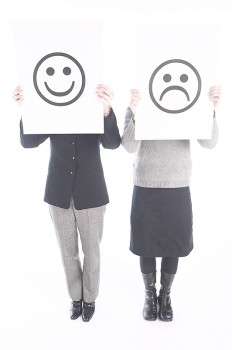About Avoidant Paruresis
Written by: Steven Soifer, MSW, Ph.D., George Zgourides, Psy.D., and Joe Himle, MSW, Ph.D.
These are but a few representative comments of people who experience bashful bladder syndrome (BBS), also referred to as bashful kidneys, pee-phobia, urophobia, psychogenic urinary retention and paruresis (the official clinical term). People with BBS are sometimes referred to as paruretics.
In contrast to physiological conditions like prostatitis (inflammation of the prostate) that block the flow of urine, BBS is a psychological disorder that involves the urinary system. More precisely, BBS is a type of social phobia, meaning the paruretic is usually shy and fears being scrutinized or criticized by others when performing in public—in this case, urinating in a public restroom. The psychological conflict that generates this particular form of social phobia is expressed through the physical symptom of being unable to urinate whenever the person desires. One of the first steps in the process of recovery is to change one’s thinking to no longer view urination in public as a performance. It is simply a necessary body function we all need to do, and there is no reflection on an individual’s worth that comes from the manner in how we do it. There is no requirement that it be fast enough, loud enough, or “perfect” enough.
The experience of BBS varies somewhat from person to person; however, certain general patterns are evident. First, BBS occurs mostly in public restrooms, but it can also occur in the homes of friends and relatives, or even at home if visitors are nearby or a family member is waiting for the paruretic. Typically, though, she or he finds the home bathroom to be the only truly safe toilet, the only place where the paruretic is consistently able to void. Most cases of BBS tend to be progressive in nature, where the fear of using public facilities grows over time and increasingly limits the sufferer’s options for activities outside the home.
Second, BBS ranges in intensity from mild, in which the person can urinate in public facilities under certain circumstances, to severe, in which the person can only urinate when alone at home. Thus the degree of BBS hesitancy ranges from a momentary delay in initiating the process to chronic and acute retention. Most people occasionally experience at least some hesitancy in public restrooms, but this differs from BBS in the matter of degree and context. A person who every now and then must wait an extra second or two before being able to urinate is not a paruretic. Rather, BBS is often a life-long condition characterized by excessive hesitancy or a total inability to urinate. The problem also causes distress over everyday activities like travel, social engagements, long business meetings, and interferes in a significant way with the paruretic’s ability to carry on with these normal activities.
Third, most paruretics describe a personal comfort threshold required for urinating, whether in public facilities or at home. In a particular situation where too many negatives such as noise, odors, lack of visual privacy, and other people in the restroom talking eclipse this comfort threshold, BBS kicks in and prevents the person from urinating.
First, familiarity with other people present in the restroom can trigger BBS, with strangers usually (but certainly not always!) leading to greater inhibition than friends or relatives. Because of the personal nature of elimination, the degree of familiarity and perceived acceptance often determine whether or not the paruretic will successfully void.
Second, proximity plays a role in the problem. Proximity for the paruretic is both physical, involving the relative closeness of others in or near the restroom, and psychological, involving the need for privacy–essentially the desire to hide one’s urination and any perceived faults in it– from others. The most frequent complaint about physical stimuli in public facilities is the absence of suitable partitions and doors on stalls. Many paruretics remark that they cannot urinate (or defecate) in a stall toilet if the door is missing. They feel embarrassed about their personal space being invaded visually.
Discomfort with lack of partitioning is central to the issue of perceived lack of privacy in public restrooms. Of course, the perception and need for privacy differ considerably across people. One individual is comfortable only at home with the bathroom door locked, while another is comfortable using a urinal in a crowded restroom. Paruretics tend toward the former.
Third, temporary psychological states, especially anxiety, anger, and fear can interfere with urination. Social phobics who are overly sensitive about the sounds and smells they make while urinating are usually fearful of being criticized for such, which in turn arouses their nervous system. Also, excessive emotional arousal may explain why attempts to urinate under favorable conditions are often unsuccessful if the individual is overly excited or feels pressured to hurry.
Generally, paruretics try to adjust to the problem by urinating as much as possible when at home and before leaving their home toilet, restricting the intake of fluids, and refusing extended social invitations. Most paruretics also perform a series of rituals such as locating vacant restrooms whenever away from home, thinking of water when trying to urinate, and running the tap to optimize the chances of urinating under adverse conditions. Most commonly, though, paruretics cope by avoiding public restrooms at all costs.
The most commonly used treatment for bashful bladder involves the individual gradually attempting to urinate in more and more difficult locations. This treatment is usually called graduated exposure therapy. Each session of exposure therapy involves several attempts at briefly urinating.
However, in order to use exposure therapy in this way, a substantial amount of urine is needed. This need can be accomplished by drinking plenty of fluids prior to the practice session. Usually drinking about one quart of water one hour prior to the practice session is best. Some people may require more water or more time to pass before they feel the strong need to urinate. Most people with bashful bladder are more successful if their need to urinate is high at the time of the practice session. Occasionally, some people have more trouble when they are very urgent, so experimentation may be necessary. Some find it helpful to use a scale to record how strongly one feels the need to urinate. A 0-10 point scale works well starting with zero indicating no urgency and ending with ten, which equals extreme urgency. It will probably work out best to start practice sessions only after your urgency level is rated at seven or above.
Always have a safe backup plan in mind, too! For example, a significant minority of paruretics find either temporary or permanent relief from symptoms by learning self-catheterization. While this sounds difficult and painful, it really isn’t when properly taught. Finding a sympathetic urologist who is willing to teach you how to do it is the best approach. For those whose symptoms are severe or who travel a lot, this may be a good interim step while also seeking other treatment, such as graduated exposure therapy. Since men can often use a stall as a backup if they can’t use a urinal successfully but women don’t have this option, catheter use is more important as a backup strategy for women working on graduated exposure.
You should also construct a behavioral hierarchy scale. Again, using a 0-10 scale, come up with those scenarios in which you have an easy time using the bathroom (for example, 0 being at home alone), and those scenarios in which you have a difficult time urinating (for example, 10 using a public restroom at a major sports event during half-time or seventh inning stretch).
For most people, initial practice sessions should take place in an isolated private restroom. It is very helpful to have a partner to work with at this point. This partner can be a trained behavioral therapist, someone from an IPA support group, a buddy, a close friend, or family member. Practice should begin by having your partner stand outside in the restroom with the door closed. Usually it is best to have your partner move some distance from the door so they cannot hear you urinate. (Some people even need to have their partner be outside their apartment or home when first starting!) Once you and your partner are in place, you should attempt to urinate. If you are successful, allow urine to flow for approximately three seconds. After successfully completing the urination trial, meet up with your partner and take a short break of approximately three minutes, after which you should try again. It is best to aim your urine stream to make as much noise as possible, since making sound while urinating is of concern for many people with bashful bladder syndrome. It is also best to avoid deliberate use of background noise, such as running a water faucet; since much of the exposure treatment will likely have to be repeated once the background noise is eliminated. In our experience, using background noise often extends the length of the treatment program.
If you have trouble initiating urination, wait at the toilet for two minutes before giving up and taking a break. If you feel that you are just about to urinate after two minutes, wait up to two minutes more at the toilet before giving up. Usually waiting beyond four minutes is not helpful. If the trial is unsuccessful, take a short three-minute break before trying again. Also, have your partner move back to where you were last successful, and then once you succeed again, move incrementally toward the point where you last failed. If you do not have a partner practice urinating in restrooms that are empty at first, then move on to situations where one person is present.
Once you are successful in starting your urine, have your partner slowly move closer to you until you are able to urinate with him directly behind you. (Note: women do not have to do this step.) This could take several sessions. If you are practicing without a partner, move to a slightly more crowded restroom after you are successful with one person present. For males, it is probably best to use the urinal for all your practice sessions. If this is impossible, your self-treatment may take longer, since you will have to practice first in the stall and then move on to the urinal. Once you are consistently successful with a few people present in the restroom then move on to more crowded restrooms. Useful restrooms for this practice include those at interstate rest areas, busy airports, sporting events, concerts, or theaters.
Some general guidelines are important to review here. It is best to practice often, preferably several times per week. Longer sessions are generally more helpful than shorter sessions. About one hour is best, with the goal of getting 15-20 practice trials in each of these one-hour sessions. You may also need to continually fluid load during your session or drink coffee or a caffeinated soft drink to have enough pressure and urine for your session. If you have trouble initiating one day and then have success the next, do not be overly concerned, since many people experience inconsistency in their progress. It’s normal and nothing to worry about.
If you do have trouble with a given step in the exposure process, try and find the halfway point between your previous success and the step that is giving you difficulty. One of the most frequent mistakes people make in doing the graduated exposure work is to move too quickly up their behavioral hierarchy. In fact, just a few inches can make the difference, since our boundaries around unsafe and safe situations are so clearly delineated in our own minds!
You should expect the self-treatment to require 8-12 sessions before you are able to urinate freely. Of course, this is an average; you could require fewer or more. It is important to know that this treatment has been helpful to many people, but there is no guarantee that it will help you. Our data indicate that about 80 percent of paruretics using these techniques are helped to a significant degree. On very rare occasions, people with bashful bladder find themselves unable to initiate urination during their practice session and then are unable to urinate when they return home. If this happens to you, seek medical attention. If untreated, this could constitute a medical emergency, so seek out a urologist immediately to gain relief. Finally, if your self-treatment fails, consult a trained behavioral therapist for help. You may also wish to consult your physician again to be sure nothing is physically wrong with your urinary system.
For those suffering from paruresis or who know of someone who suffers from this social phobia, there are things one can do:
Visit our website at https://paruresis.org and get the latest information about this anxiety disorder. There is a moderated discussion group accessible through the website, as well as a place to ask questions.
If you already haven’t done so, start talking to your loved ones, friends, relatives, and co-workers about paruresis. A very typical response is: “Oh, I know someone who suffers from that”, or even, “You know, I have that problem too!”
Join the International Paruresis Association (IPA), a tax-exempt, non-profit organization, to keep informed about the latest developments on the topic. The IPA, Inc. acts to educate the public, gather and disseminate useful information, and seek effective treatments for paruresis. Also, IPA can refer you to a cognitive-behavioral therapist to help you with your paruresis. This link will take you to our signup form.
Find yourself a buddy in order to practice the graduated behavioral exposure techniques outlined earlier in this pamphlet. The website allows you to access a buddy list for you to put your name onto or find someone else near you who is seeking a buddy. The IPA, Inc. may also be able to help find someone to work with in your area.
Attend one of the IPA’s weekend workshops and practice with others to begin recovering from paruresis. Workshops are held several times a year in different parts of the U.S. and in some international locations. Check the website for a schedule of upcoming workshops.
Either join an existing support group or start one yourself. Regular participation in a support group is one of the best ways to conquer your fear of urinating in public. Support group members practice together at malls, movie theaters, rest areas, and other places to overcome their paruresis. IPA can let you know if there is a support group in your area, and if not, how you can start one. This link will take you to our list of support groups.
More than anything else, ongoing practice on a daily basis will allow you to overcome or recover from your paruresis in a timely manner. Persistent, consistent practice is essential for improvement.
The way to approach the problem is by being straightforward with your employer. Let the employer know that you suffer from an anxiety disorder named paruresis, which is a bona fide social anxiety disorder listed in the Diagnostic Statistical Manual of Mental Disorders (DSM) IV with code 300.23, and that under the ADA, you should be given reasonable accommodation in terms of drug testing. This means that the employer should allow you to give a hair, saliva, or blood sample instead of a urine sample. If you belong to a union, you should also advise them of your status so that they will support you in case of disciplinary action. You should also have a doctor, urologist, psychologist or psychiatrist document your condition, and pay for an independent drug test immediately after being unable to provide a urine sample to protect your rights and be useful as evidence in court. People with paruresis should be extra careful about recreational drug use, as hair testing can detect drug use that happened many weeks, even months, before the time of the test and much longer than the period a urine test can detect.
One thing you can do is to be aware of how easy it is for someone to develop paruresis. Education is crucial here. Talking about this condition, especially in school and medical settings, is very important. If you have children, make sure that they never feel pressured around bodily functions (Will you PLEASE hurry up and go already? YUK!)
Second, let your children’s teachers know about paruresis. In this way, they will hopefully prevent conditions that could allow it to develop in the school setting.
Third, at your work place, health clubs, and other public facilities, if you find a particular restroom design objectionable (for instance, no dividers between urinals or low-bowl urinals), let the management know and ask them to do something about it.
Fourth, place an IPA public service announcement in your local paper to tell people to contact us if they want information about paruresis and/or a contact person for a buddy or support group in their area. Finally, write letters to newspaper columnists (Dear Abby, Ann Landers), government officials, or to the editor of your local newspaper to help get the word out.
All of these steps will help you feel empowered in relation to paruresis.
WARNING AND DISCLAIMER:
 This discussion is NOT a substitute for medical advice and does not constitute the practice of medicine, psychiatry, clinical psychology, clinical social work or any other mental health profession. If you are having trouble urinating, you should always contact a physician since difficulty with voiding can be a symptom of a serious medical condition. We are a group of professional people, people who suffer from paruresis, and some who have recovered. We have assembled a board of directors and an advisory board to help people cope with urinary dysfunction that has a psychological or social origin. In this discussion, we are NOT practicing medicine, psychiatry, clinical psychology, clinical social work or any other mental health profession. You should have your doctor evaluate your condition before diagnosing yourself, and seek the appropriate necessary mental health counseling if warranted. IPA, Inc. disclaims any and all legal liability whatsoever.
This discussion is NOT a substitute for medical advice and does not constitute the practice of medicine, psychiatry, clinical psychology, clinical social work or any other mental health profession. If you are having trouble urinating, you should always contact a physician since difficulty with voiding can be a symptom of a serious medical condition. We are a group of professional people, people who suffer from paruresis, and some who have recovered. We have assembled a board of directors and an advisory board to help people cope with urinary dysfunction that has a psychological or social origin. In this discussion, we are NOT practicing medicine, psychiatry, clinical psychology, clinical social work or any other mental health profession. You should have your doctor evaluate your condition before diagnosing yourself, and seek the appropriate necessary mental health counseling if warranted. IPA, Inc. disclaims any and all legal liability whatsoever.
QUICK LINKS
INTERNATIONAL PARURESIS ASSOCIATION
P.O. Box 21237
Catonsville, MD 21228
You Are Not Alone.
There Is Help For You!
Shy Bladder, Bashful Bladder, Pee Shy
IPA OFFICE HOURS
Monday - Friday
10:00am - 6:00pm (ET)
844-I-CANT-PEE (422-6873)
US/Canada
443-315-5250 Office
Email: getinfo@paruresis.org
This website is NOT a substitute for medical or legal advice and does not constitute the practice of law, medicine, psychiatry, clinical psychology, clinical social work, or any other mental health profession. If you are having trouble urinating, you should always contact a physician since difficulty with voiding can be a symptom of a serious medical condition. We are a group of professional people and people who have suffered with paruresis. We have assembled a board and a board of advisors to help people cope with urinary dysfunction that has a psychological or social origin. On this website, we are NOT practicing medicine, psychiatry, clinical psychology, clinical social work or any other mental health profession. You should have your doctor evaluate your condition before diagnosing yourself, and seek the appropriate necessary mental health counseling if warranted. IPA, Inc. disclaims any and all legal liability whatsoever.



